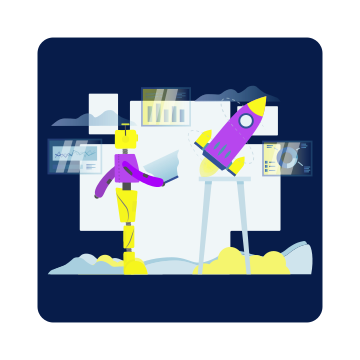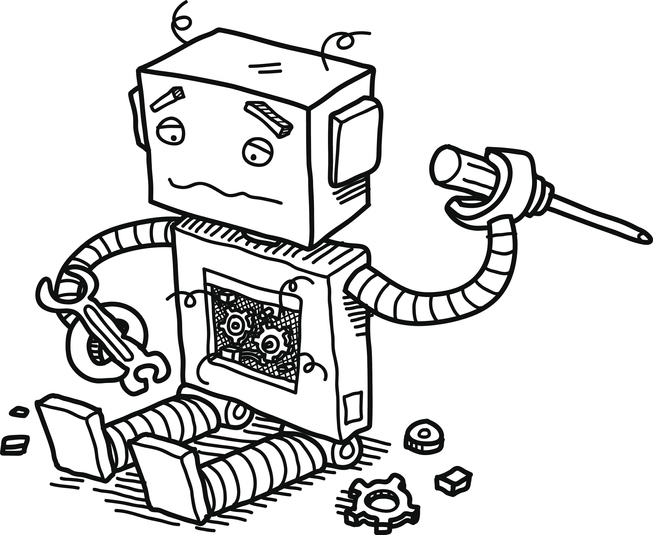9 RPA Resolutions for 2022 That You Should Actually Keep
With every new year comes the opportunity for a fresh start. You may have already made those personal resolutions, and we’re sure you’re sticking to them ;), so why not apply them to your RPA ambitions as well?
If they can take can make your personal and individual growth soar, then surely they can take your automation program to new heights too. We’ll even help to get you started. Here are 9 RPA resolutions for 2022 that will help you deliver on your automation objectives and bring you closer to capturing the scale and returns you’re after.
1. Migrate Your Digital Workforce to Another RPA Platform
The desire to switch RPA providers has never been greater. Organizations are stuck on legacy platforms. They cannot scale because delivering automation still takes too long, even though their expensive RPA vendors promised otherwise.
Automation programs want to leverage more cost-efficient platforms that provide better capabilities to achieve hyperautomation, but the cost and effort associated with manual migration has always been a barrier.
Don’t let that stop you.
2022 is the year you can migrate to another RPA platform with the help of RPA platform migration solutions like Blueprint’s end-to-end tool that slashes costs by 75% and accelerates migrations by 3x, making this one resolution you can definitely keep.
2. Set up Your Automation Center of Excellence (CoE)
If you haven’t already, now is the time. RPA Centers of Excellence are cross-functional teams responsible for automation that harmonize your RPA practices. It’s the optimal operational model that will help you scale, standardize, govern, and maximize automation ROI.
Learn More: How to Set Up Your RPA Center of Excellence (CoE)
3. Augment Your Automation Toolchain
A thriving automation program is built on the tools that accelerate RPA delivery. There is no better time than the present to start building your automation toolchain.
If you need help figuring out what to target first, we recommend you start where all things start; at the beginning. Invest in a task capture solution that enables all your employees to record business tasks so you can identify and prioritize RPA candidates much quicker.
Of course, some tools are better than others at doing this and can even build most of the automation for you, like, wink wink, Blueprint Task Capture.
4. Implement Hyperautomation
As you start building out your automation toolchain, you’re well on the road to implementing hyperautomation.
Hyperautomation is a collection of tools that, when leveraged with artificial intelligence (AI) and machine learning (ML), enables you to move beyond rule-based task automation and automate more complex, end-to-end processes for much higher efficiency and ROI.
5. Stay Ahead of the Curve and Look into Emerging Technologies Like Semantic Automation
The automation enterprise software market is evolving at a blistering pace. Use this year as an opportunity to stay ahead of the curve by leveraging new opportunities to make automation more accessible.
Semantic automation uses AI and machine learning technologies like OCR (optical character recognition) to observe task and process execution and then emulate those same tasks and processes with limited setup and intervention.
6. Consolidate All Automations in One Place
It’s no secret that most organizations implementing automation use multiple RPA platforms. While there are reasons for a multi-platform RPA strategy, it can still cause many challenges like high costs and less-effective governance.
If there is no strong desire to migrate your automation ecosystem into one RPA execution tool, governance and standardization can be optimized by consolidating all automations in one centralized platform for better control and oversight. Blueprint also provides this capability where a digital twin of all your automations resides in Blueprint’s Business Transformation Platform for total collaboration, control, and change management.
7. Digitize Your Process Design Documents (PDD)
One of the barriers to RPA at scale is how automations are packaged and communicated. Many automation programs are still relying on outdated documents that resemble Business Requirements Documents from decades ago.
This year is an opportunity to digitize automation design and communication so it can be automatically pushed into the RPA tool you use for quicker and higher-quality automation delivery.
8. Reduce RPA Design & Delivery Time
One of the largest pain points for RPA programs is the time it takes to deliver an automated process into production. It’s also one of the reasons organizations are looking to switch RPA vendors—they want to reduce automation delivery time with simplified tools.
If this hits home, another RPA resolution on your 2022 list should be to invest in the solutions that simplify RPA candidate identification and automation prioritization, design, and delivery by democratizing automation practices, which, conveniently enough, rounds off our RPA resolutions.
9. Democratize Automation Delivery
RPA identification, prioritization, and design needs to be opened up to more business users to achieve automation at scale and higher returns. There’s no better solution for truly democratized automation than Blueprint.
Blueprint enables all stakeholders to capture automation opportunities easily and immediately identify how much of that process is already compatible with your RPA tool. This allows you to prioritize automation candidates by speed and ease of implementation.
Blueprint also simplifies automation design by enabling all stakeholders to converge in one centralized platform to connect processes for automation to critical dependencies, optimize them, and sync them with any RPA platform for accelerated development.
Want to see how? Download the Blueprint Business Transformation Platform Datasheet to discover how Blueprint enables scale and greater returns with a solution that delivers task capture, automation design, optimization, governance, and even migration, all within the same platform.
Share this
Recent Stories

5 RPA Resolutions to Keep for 2024

The Top 7 RPA Trends of 2023





